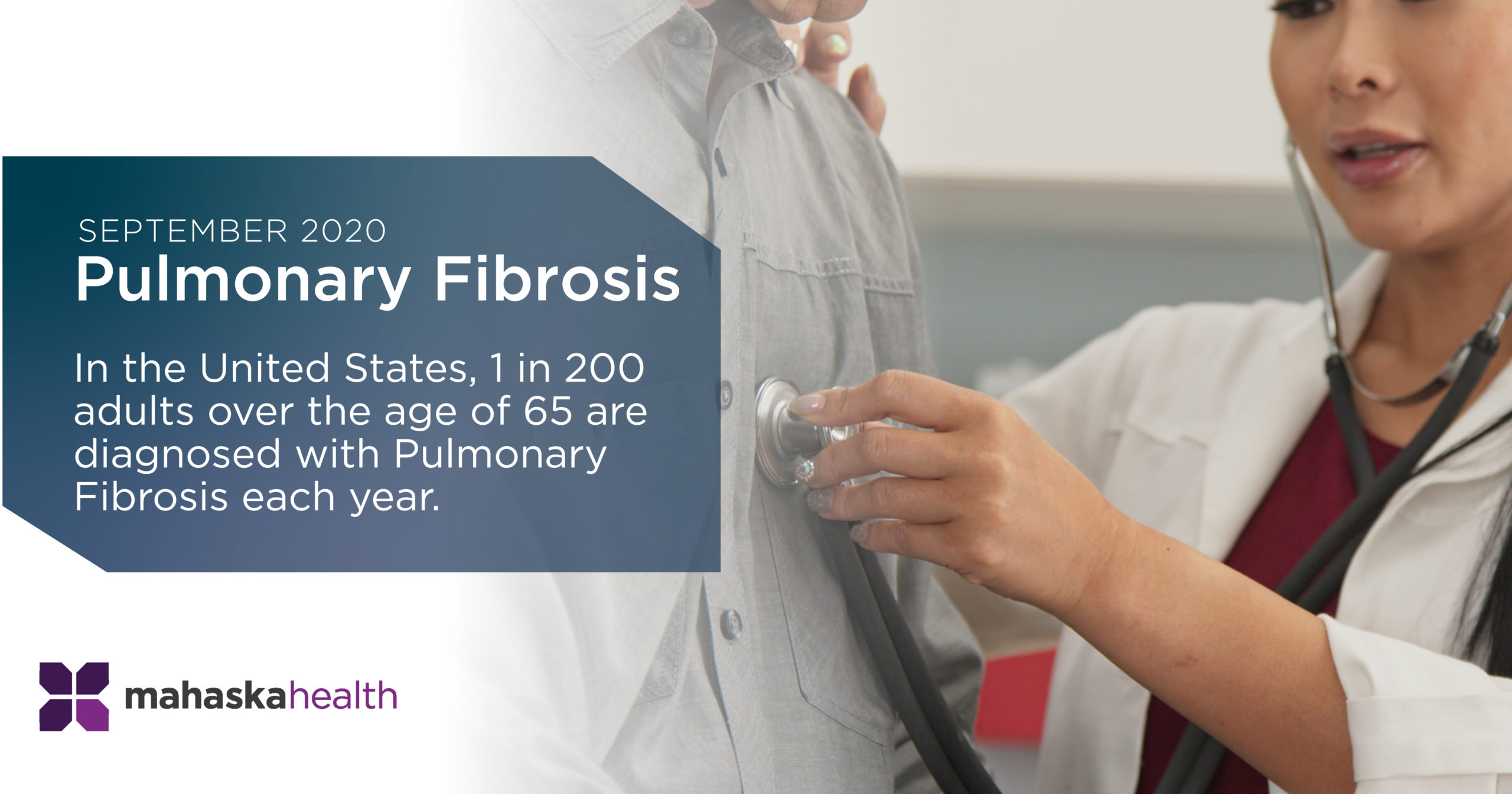 Breathing is one of the vital, yet involuntary, actions our bodies do each day. It is something done so regularly that we often do not notice it unless there is a problem. For about 200,000 individuals, breathing is something that becomes a conscious effort for them. September is National Pulmonary Fibrosis Awareness Month, and below are a few facts about this disease:
Breathing is one of the vital, yet involuntary, actions our bodies do each day. It is something done so regularly that we often do not notice it unless there is a problem. For about 200,000 individuals, breathing is something that becomes a conscious effort for them. September is National Pulmonary Fibrosis Awareness Month, and below are a few facts about this disease:
- What is Pulmonary Fibrosis?
As we live, there can be times when we are hurt and have a wound. In the healing process for that wound, we sometimes see a scar – a mark left on the skin that is reminiscent of the wound we incurred. Mayo Clinic explains, “Pulmonary Fibrosis is a lung disease that occurs when lung tissue becomes damaged and scarred. This thickened, stiff tissue makes it more difficult for your lungs to work properly.” Thus, Pulmonary Fibrosis is a disease that inhibits proper breathing due to the scarring of the lungs. According to MedLine Plus, some of the symptoms for Pulmonary Fibrosis include: Shortness of breath; a dry, hacking cough that doesn’t get better; fatigue; weight loss for no known reason; aching muscles and joints; and clubbing, which is the widening and rounding of the tips of the fingers or toes.” If you are concerned you may be experiencing these symptoms, we encourage you to make an appointment with your primary care provider. - Who is affected by Pulmonary Fibrosis?
Medical professionals at Mayo Clinic explain, “Although pulmonary fibrosis has been diagnosed in children and infants, the disorder is much more likely to affect middle-aged and older adults.” The Pulmonary Fibrosis Foundation (PFF) states that “one in 200 adults over 65 years of age are affected by [Pulmonary Fibrosis] in the United States,” and “50,000 new cases of [Pulmonary Fibrosis] are diagnosed each year.” It is also interesting to note more of the demographic details of this disease. The American Lung Association states, “It is more common in men than women.” - What is the treatment for Pulmonary Fibrosis?
Presently, this disease has no known cure. However, there are treatment options available for those who experience the symptoms of Pulmonary Fibrosis. These treatments work to lessen the effects of the disease and make a much more livable condition for these individuals. Some of these treatment options include oxygen treatments and additional medication. Other options may be available for you, so we encourage you to talk to your primary care provider if you suffer from Pulmonary Fibrosis.

